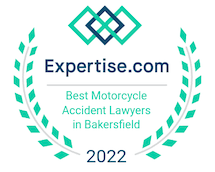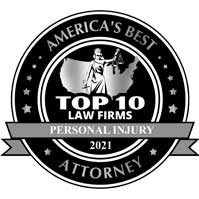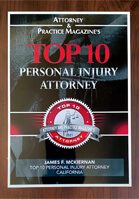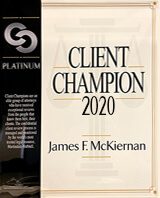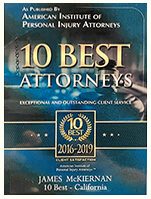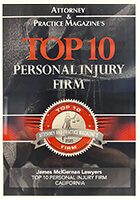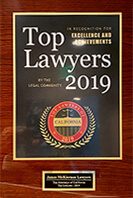What to Do After Being Hit by a Car as a Pedestrian
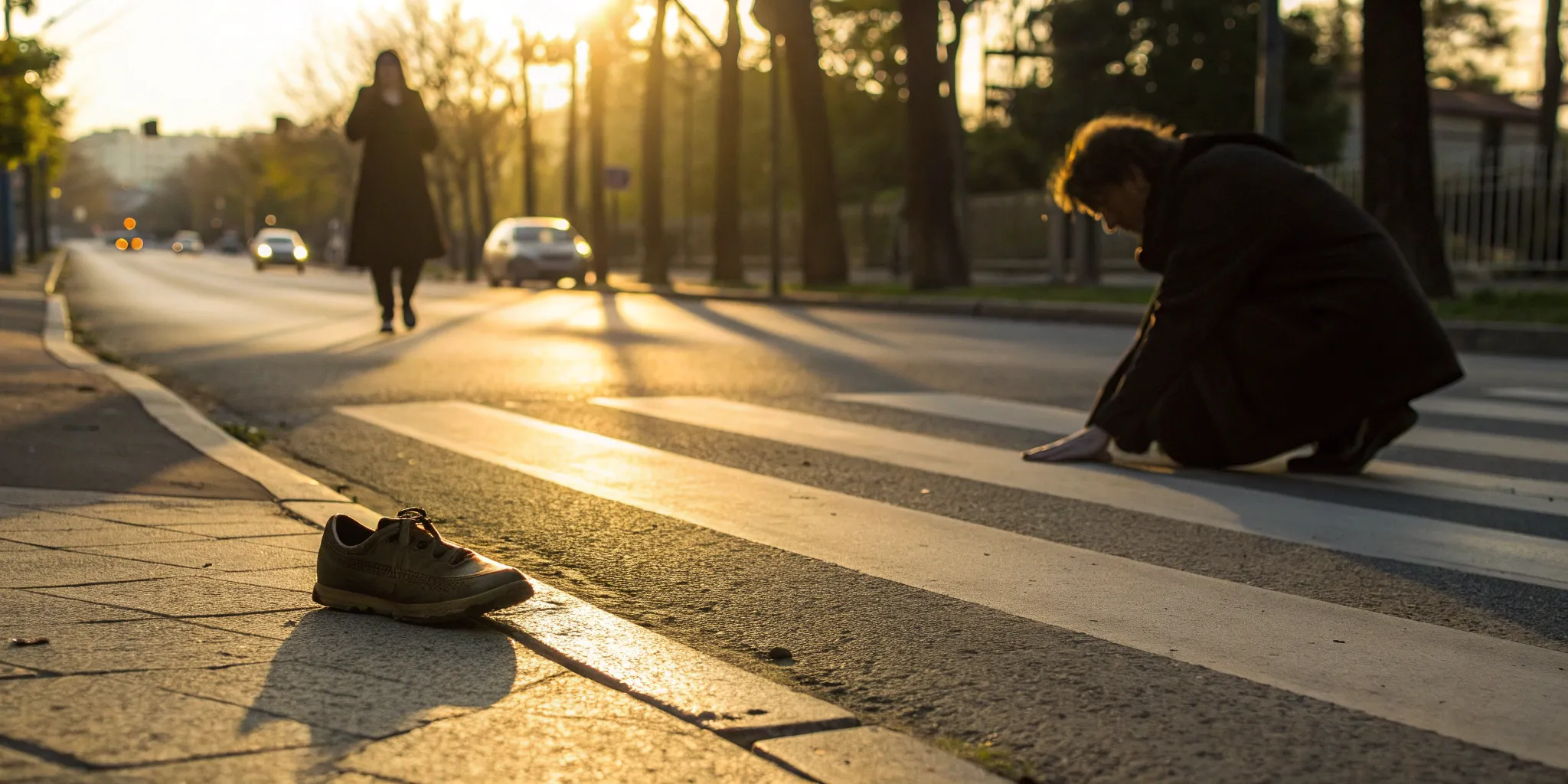
When a car hits you, it’s easy to feel like a victim—powerless and at the mercy of drivers, police, and insurance companies. But it’s important to remember that you have rights. California law provides strong protections for pedestrians, and understanding them is the first step toward taking back control. The question of what to do after being hit by a car as a pedestrian isn’t just about immediate safety; it’s about setting the foundation to ensure you are treated fairly throughout the entire process. This article will empower you with the knowledge you need, from understanding your right to compensation to knowing how to handle insurance adjusters. We’ll give you the actionable steps to stand up for yourself and get the support you deserve.
Key Takeaways
- Seek Medical Care Immediately, Even If You Feel Okay: Adrenaline can hide serious injuries after an accident. Getting a medical evaluation right away is essential for your health and creates a vital record that connects your injuries to the incident, which is crucial for any future claim.
- Gather Evidence, But Don’t Discuss Fault: Use your phone to photograph everything—the car, your injuries, and the surrounding area. While you should exchange information with the driver, avoid saying “I’m sorry” or admitting any fault, as these statements can be used against you later.
- Let a Lawyer Talk to the Insurance Company: The other driver’s insurance adjuster is trained to minimize your claim. Protect your rights by directing all their questions to your attorney and never accepting a quick settlement offer without legal advice.
What Should You Do Immediately After Being Hit by a Car?
Being hit by a car is a terrifying experience, and in the moments that follow, it’s easy to feel overwhelmed and unsure of what to do. Your mind is racing, you’re likely in pain, and everything feels chaotic. But the actions you take right after the accident are critical for your health and for protecting your rights. Taking a deep breath and focusing on these immediate steps can make a significant difference. Here’s a clear guide on what to prioritize first.
Call 911 and Get Medical Help
Your first priority is your well-being. Call 911 immediately to report what happened and get police and paramedics on their way. Even if you think your injuries are minor, it’s essential to get a full medical check-up. The shock and adrenaline from an accident can easily mask pain, and some serious conditions, like internal bleeding or head injuries, aren’t immediately obvious. Getting medical help right away not only starts your recovery but also creates an official record of your injuries. This documentation will be vital if you decide to file a personal injury claim later on.
Move to a Safe Location
If you are able, move out of the street and onto a sidewalk or shoulder to prevent another accident. Your safety is the most important thing. However, if you are seriously hurt or feel sharp pain when you try to move, stay where you are and wait for emergency responders to arrive. Moving with a back, neck, or head injury could make it much worse. Don’t try to be a hero. Listen to your body and wait for the professionals who are trained to move injured people safely. Once you are in a safe spot, try to stay there until help arrives.
Stay Calm and Check for Injuries
It’s completely normal to feel panicked, but try your best to stay calm. Take slow, deep breaths to help ground yourself. While you wait for the ambulance, do a gentle mental scan of your body. Notice where you feel pain, numbness, or discomfort. This isn’t about diagnosing yourself, but about being able to clearly communicate your symptoms to the paramedics when they arrive. Remember, the full extent of your injuries might not be apparent for hours or even days. That’s why you should always accept medical treatment at the scene, even if you feel like you can walk away.
How to Document the Accident Scene
After an accident, your memory can become fuzzy, and details can get lost. That’s why documenting everything you can, right then and there, is one of the most important things you can do to protect yourself. If you are physically able, gathering this information creates a clear record of what happened. Think of yourself as an investigator—every piece of evidence you collect can help build a strong foundation for your case later on. This documentation provides concrete proof that can support your claim and ensure the story is told accurately.
Take Photos of Everything
Your phone is one of your most powerful tools at the accident scene. Use it to take pictures and videos of absolutely everything you can think of. Start with the car that hit you, making sure to get a clear shot of the license plate and any damage to the vehicle. Then, document your own injuries, any torn clothing, and the general area. Capture photos of nearby traffic lights, stop signs, crosswalks, and even the weather conditions. This visual evidence helps create a complete picture of the circumstances surrounding the accident, leaving little room for dispute.
Get Information from Witnesses
What other people saw can be a huge help to your case. If anyone witnessed the accident, ask for their name and phone number. Don’t be shy—most people are willing to help. A witness can provide an unbiased account of what happened, which can be incredibly valuable if the driver’s story differs from yours. Their testimony can confirm key details like who had the right-of-way or how fast the car was going. This information is often essential for any future legal proceedings and strengthens your position significantly.
Exchange Details with the Driver
It’s essential to get the driver’s information before you leave the scene. Politely ask for their full name, address, phone number, and driver’s license number. Most importantly, get the name of their car insurance company and their policy number. Write this information down or take a picture of their license and insurance card with your phone. Having these details is non-negotiable, as it’s the information you or your lawyer will need to file a claim and begin the process of recovering compensation for your injuries and other damages.
Ask for the Police Report Number
When the police arrive, they will create an official report about the accident. This document is a critical piece of evidence. Before the officers leave the scene, make sure to ask for the police report number and the name of the responding officer. This simple step will make it much easier for you to obtain a copy of the police report later on. The report will contain the officer’s observations, statements from you, the driver, and any witnesses, and often an initial assessment of fault, making it a cornerstone of your personal injury claim.
What Are Your Legal Rights as a Pedestrian in California?
If you’ve been hit by a car, you might feel overwhelmed and unsure of what to do next. It’s completely normal. The good news is that California law provides strong protections for pedestrians. Understanding these rights is the first step toward getting the support and compensation you need to heal. It’s not just about rules and regulations; it’s about ensuring you’re treated fairly during a difficult time.
Knowing your rights empowers you to stand up for yourself. It helps you understand what to expect from drivers, insurance companies, and the legal process. Let’s walk through the key legal principles that apply to pedestrian accidents in California so you can feel more confident about your path forward.
Your Right to Fair Compensation
One of the biggest myths about pedestrian accidents is that you can’t recover damages if you weren’t in a crosswalk or were momentarily distracted. That’s simply not true. California follows a legal rule called “comparative negligence.” This means you can still be compensated for your injuries even if you were partially at fault for the accident.
For example, if a court finds you were 20% responsible, your total compensation would just be reduced by that amount. You don’t lose your right to a financial recovery. Many victims mistakenly believe they don’t have a case, but the law is designed to be much fairer than that. The driver who hit you still has a responsibility to operate their vehicle safely, and their insurance company should be held accountable.
How California Determines Fault
To secure compensation, your legal team must prove the driver was negligent. Think of negligence as a three-part test. First, we have to show the driver had a duty to drive safely and watch out for people on foot—which all drivers do. Second, we must prove they failed in that duty, perhaps by speeding, texting, or running a red light.
Finally, we have to connect their failure directly to your injuries. This is how we establish fault in a personal injury claim. Drivers in California have a high standard of care when it comes to pedestrians, who are considered vulnerable road users. An experienced attorney knows how to gather the evidence needed—like police reports, witness statements, and traffic camera footage—to build a strong case that clearly shows the driver’s negligence.
Know the Deadline to File a Claim
After an accident, time is of the essence for a critical reason: the statute of limitations. This is a legal term for the deadline you have to file a lawsuit. In California, most personal injury cases, including pedestrian accidents, have a two-year statute of limitations from the date of the injury.
While two years might sound like a long time, it can pass quickly when you’re focused on recovery. It’s vital to contact an attorney long before this deadline approaches. Evidence can disappear, witnesses’ memories can fade, and a strong case takes time to build. Waiting too long can seriously jeopardize your ability to get the compensation you deserve. Acting promptly protects your legal rights and gives your case the best chance of success.
How Local Laws Can Affect Your Case
Many people believe pedestrians always have the right of way, but the reality is more complex. While drivers have a significant duty to avoid collisions, pedestrians are also expected to follow traffic laws, like obeying signals and not darting into the street. The specific circumstances of your accident matter, and sometimes, local city or county ordinances can also play a role.
For instance, the rules for crossing the street outside of a marked crosswalk can vary slightly depending on the location. This is why having a lawyer who is deeply familiar with both state and local traffic laws is so important. They can analyze the specifics of your situation to build the strongest argument on your behalf and counter any attempts by the insurance company to unfairly shift blame onto you.
Should You Talk to the Insurance Company?
After an accident, you can almost guarantee you’ll get a call from the other driver’s insurance company. The person on the other end, the insurance adjuster, will likely sound friendly and concerned, but it’s critical to remember their job. Their primary goal is to protect their company’s bottom line, which means paying you as little as possible for your claim. They are highly trained to ask questions in a way that can get you to say something that unintentionally hurts your case.
Anything you say to an adjuster can be recorded and used against you later. They might try to get you to admit partial fault, downplay your injuries, or agree to a quick settlement before you even know the full extent of your medical needs. This is why it’s so important to be cautious. The safest path forward is to let an experienced personal injury lawyer handle all communication with the insurance company. This ensures that someone who is 100% on your side is protecting your rights from the very beginning.
Why You Should Avoid the Other Driver’s Insurer
Let’s be direct: the other driver’s insurance company is not your friend. Their legal and financial duty is to their policyholder and their shareholders, not to you. When an adjuster calls, they are actively searching for any piece of information that could help them reduce or deny your claim. They might twist your words to suggest you were partially at fault or use a casual “I’m feeling okay” to argue your injuries aren’t severe. Speaking with them directly, especially right after the accident when you’re still in shock and unsure of your injuries, puts you at a serious disadvantage. Before you say anything, it’s always best to consult with an attorney who can advise you on the best next steps.
What to Say (and What Not to Say)
If you do find yourself on the phone with an adjuster, remember that less is more. You can confirm basic details like your name and contact information, but that’s it. Do not discuss how the accident happened or the specifics of your injuries. Never admit any fault or even say something that could be interpreted as an apology, like “I’m so sorry this happened.” A simple, polite statement is your best defense. You can say, “I’m not prepared to discuss the details of the accident at this time. Please direct all future questions to my lawyer.” This prevents you from making any common post-accident mistakes that could jeopardize your claim.
Watch Out for These Insurance Company Tactics
Insurance companies rely on a few key tactics to minimize payouts. One of the most common is offering a quick, low settlement. This might seem like a relief when bills are coming in, but it’s almost always far less than what you’ll need for full recovery and rarely covers future medical care or lost wages. Another strategy is pressuring you for a recorded statement, hoping you’ll say something they can use to create inconsistencies in your story. They may also try to delay the process, hoping you’ll become frustrated and accept a lower offer out of desperation. Understanding these insurance claim strategies helps you recognize when you’re being manipulated.
How to Handle Requests for a Recorded Statement
You are under no legal obligation to provide a recorded statement to the other driver’s insurance company. When they ask, your answer should be a polite but firm “no.” The entire purpose of a recorded statement is to lock you into a narrative before you have all the facts or understand the full scope of your injuries. The adjuster will analyze every word, looking for anything that can be used to question your credibility later. The best way to respond is to simply state, “I will not be providing a recorded statement.” Then, let them know your attorney will be in contact. This sends a clear signal that you are serious about protecting your rights.
Get the Right Medical Care After an Accident
After the shock of an accident, your first instinct is to assess the damage—to your body, your belongings, and your sense of safety. Your health should be your number one priority. Seeking prompt and thorough medical care is not only essential for your physical recovery but also for building the foundation of a potential personal injury claim. Every doctor’s visit, prescription, and physical therapy session creates a record that tells the story of your injuries. Insurance companies will look closely at this story, so it’s important to get it right from the very beginning.
Why You Need to See a Doctor Immediately
Even if you feel you can walk away from the accident with just a few scrapes, you need to get a medical evaluation right away. The adrenaline pumping through your system can easily mask pain from serious injuries. What feels like minor soreness could be a sign of something more severe. Seeing a doctor within 24 to 72 hours creates a direct link between the accident and your injuries in an official medical record. This documentation is one of the most important pieces of evidence you’ll have, making it much harder for an insurance company to argue that your injuries happened somewhere else.
Follow Up with Any Specialists
Your first medical visit is just the beginning of your recovery journey. Your primary doctor might refer you to specialists like an orthopedist for bone fractures, a neurologist for head injuries, or a physical therapist to regain mobility. It is absolutely critical to follow this advice and attend every single appointment. Insurance adjusters look for any reason to minimize your claim, and gaps in your treatment history are a red flag for them. They might argue that if you were truly in pain, you wouldn’t have missed your appointments. Following your prescribed treatment plan shows you’re serious about your recovery and strengthens your case.
Keep Detailed Medical Records
Be completely honest and thorough with your medical team. Tell them about every single ache, pain, or unusual symptom you’re experiencing, no matter how minor it seems. What you leave out of your report might be left out of your medical record. It’s also a great idea to keep a simple journal at home. Each day, jot down your pain levels, any new symptoms, and how your injuries are affecting your daily life. For example, note if you couldn’t sleep through the night, had trouble getting dressed, or missed a family event. This personal log can be a powerful tool for documenting your pain and suffering down the line.
Look Out for Delayed Injuries
Some of the most serious injuries don’t show up immediately. Symptoms of conditions like whiplash, concussions, and even internal bleeding can take hours or days to appear. You might feel fine at the scene but wake up the next morning with severe neck pain, dizziness, or headaches. This is another reason why getting checked out by a doctor soon after the accident is so important—a medical professional is trained to spot the subtle signs of these delayed-onset injuries. Don’t just assume you’re fine because you don’t feel pain right away. Protect your health and your legal rights by seeking a professional medical opinion.
When Is It Time to Hire a Pedestrian Accident Lawyer?
After an accident, you’re dealing with injuries, medical bills, and emotional stress. The thought of adding a legal case to your plate can feel overwhelming. But in many situations, getting legal help is the most important step you can take to protect your future. If you’re feeling unsure about what to do next, or if the at-fault driver’s insurance company has already contacted you, it’s time to consider speaking with an attorney. An experienced lawyer can handle the complexities of your case, allowing you to focus on what truly matters: your recovery.
Signs You Need a Lawyer on Your Side
One of the clearest signs you need legal help is a phone call from the driver’s insurance adjuster. Their goal is simple: to pay you as little as possible. They might sound friendly and helpful, but they are trained to get information that can weaken your claim. You should never give a recorded statement, sign any documents, or accept an early settlement offer without speaking to a lawyer first. If your injuries are serious, if you’re facing significant medical bills and lost wages, or if the insurance company is disputing who was at fault, you need a professional on your side. A personal injury attorney will protect your rights and ensure you aren’t pressured into an unfair deal.
How Our Firm Can Support You
When you hire our firm, you’re not just getting a lawyer—you’re getting a dedicated team to handle every aspect of your case. We take the burden off your shoulders so you can heal. Our first step is to launch a thorough investigation into the accident. We will gather crucial evidence, such as police reports, witness statements, and traffic camera footage. We also work closely with your doctors to document the full extent of your injuries and what they mean for your future. From there, we manage all communications with the insurance companies, handling the negotiations and paperwork for you. We build a strong case designed to secure the fair compensation you deserve, and we are always prepared to go to court if needed.
The Advantage of Experienced Legal Counsel
Trying to handle a claim alone puts you at a major disadvantage. Insurance companies have teams of lawyers and adjusters working to protect their bottom line, which often means denying claims or making lowball offers. They know how to use your own words against you and may try to shift blame for the accident. An experienced pedestrian accident lawyer levels the playing field. We understand the tactics insurers use and know how to counter them. We have the resources to accurately calculate your total damages—including future medical care, lost earning capacity, and pain and suffering—to ensure you receive a settlement that truly covers your losses. Having a skilled advocate fighting for you dramatically increases your chances of a successful outcome.
What Kind of Compensation Can You Recover?
After being hit by a car, the physical and emotional toll can be overwhelming. The financial strain shouldn’t be something you have to carry alone. In California, the law allows you to seek financial compensation—often called “damages”—from the person responsible for your injuries. The goal is to help you cover the costs associated with the accident and compensate you for what you’ve been through, putting you back in the position you were in before the incident, as much as possible.
This compensation is divided into two main categories: economic and non-economic damages. Economic damages are the tangible, out-of-pocket costs you can prove with receipts and bills, like medical expenses and lost paychecks. Non-economic damages are for intangible losses that don’t have a clear price tag, such as physical pain and emotional trauma. It’s easy to overlook certain costs or underestimate the long-term impact of an injury, which is why it’s so important to understand what you’re entitled to. This is the first step toward getting the resources you need to rebuild. An experienced attorney can help you identify all potential areas of compensation to ensure your settlement reflects the full impact the accident has had on your life, both now and in the future.
Medical Bills and Lost Income
The most immediate financial burdens after an accident are often medical bills and lost income. You have the right to seek compensation for every medical expense related to your injuries, including the ambulance ride, emergency room visit, hospital stay, surgeries, and prescription medications. It’s not just about the bills you’ve already received; you can also recover costs for anticipated future medical care. If you’ve had to miss work while recovering, you can also claim those lost wages. This includes salary, hourly pay, and any other income you would have earned if the accident hadn’t happened. Be sure to keep track of any damaged personal property as well, like a broken phone or laptop, as those costs are also recoverable.
Pain and Suffering
Compensation goes beyond just the numbers on your bills. You can also be compensated for the physical pain and emotional distress you’ve endured. This is what the legal system refers to as “pain and suffering.” It acknowledges the human cost of an accident, including the physical discomfort, anxiety, fear, and sleepless nights that often follow a traumatic event. Some injuries can also lead to a “loss of enjoyment of life,” meaning you can no longer participate in hobbies or activities you once loved. While no amount of money can erase this experience, a fair settlement should account for the significant impact it has had on your well-being and daily life.
Future Care and Rehabilitation Costs
Serious injuries often require long-term medical attention. Your compensation should cover the projected costs of any future care you’ll need to make the best possible recovery. This can include things like ongoing physical therapy, rehabilitation services, counseling, or even modifications to your home to accommodate a new disability. This is why it’s so important to follow up with your doctor and attend all scheduled appointments. Consistent medical records create a clear history of your injuries and treatment plan, which provides the evidence needed to secure compensation for the care you’ll need down the road. Don’t let an insurance company rush you into a settlement before the full extent of your injuries is known.
Avoid These Common Mistakes That Could Weaken Your Case
After an accident, you’re dealing with a lot—pain, stress, and uncertainty. It’s easy to make a misstep that could unintentionally hurt your ability to get the compensation you need. The moments and days following the incident are critical, and what you do (and don’t do) can significantly impact your case. Let’s walk through some of the most common mistakes people make so you can protect your rights and focus on your recovery.
Don’t Admit Fault
It’s a natural reflex to say “I’m sorry” after a shocking event, but you should avoid it. Never admit fault to the driver, witnesses, or an insurance adjuster. Even a simple apology can be twisted and used against you to argue that you were responsible for the accident. There’s a common misconception that pedestrians always have the right-of-way, but fault can be complex and is sometimes shared. Let the evidence and the police report speak for themselves. Stick to the facts of what happened without assigning blame to yourself or anyone else. Your legal team will handle the process of determining liability.
Don’t Wait to Get Medical Care
Your health is the top priority. Even if you feel okay, you need to see a doctor as soon as possible, ideally within 24 to 72 hours. The adrenaline from an accident can mask pain, and serious injuries like concussions or internal bleeding may not have immediate symptoms. Seeking prompt medical attention does two crucial things: it ensures you get the care you need to prevent further harm, and it creates an official record of your injuries. This medical documentation is essential evidence that directly links your injuries to the accident, which is vital for building a strong personal injury claim.
Stay Off Social Media
After an accident, it’s best to treat your social media accounts as off-limits when it comes to your case. Insurance companies and their lawyers will often look through your profiles for anything they can use to downplay your injuries. A photo of you smiling at a family gathering or a post about taking a short walk could be taken out of context to argue that you aren’t as hurt as you claim. The safest approach is to avoid posting about the accident or your recovery process entirely. You can also ask friends and family not to post photos of you or tag you until your case is resolved.
Don’t Accept a Quick Settlement Offer
Soon after the accident, you might get a call from the driver’s insurance company with a settlement offer. It can be tempting to accept, especially when medical bills are piling up. However, these initial offers are almost always far less than what your claim is actually worth. The adjuster’s goal is to close the case quickly and for the lowest amount possible. They are counting on you not knowing the full extent of your injuries or future medical needs. Never discuss fault or agree to a settlement without first speaking to an experienced personal injury lawyer who can accurately value your claim.
Keep All Your Medical Appointments
Your recovery journey doesn’t end after the initial emergency room visit. It’s incredibly important to follow your doctor’s treatment plan, which includes attending all follow-up appointments, physical therapy sessions, and specialist visits. If you start skipping appointments, the insurance company may argue that your injuries must not be that serious or that you aren’t committed to getting better. Consistent medical care not only helps you heal properly but also demonstrates the ongoing impact of your injuries. Following up with your doctor creates a clear and continuous record that strengthens your case and shows you’re doing everything you can to recover.
How to Protect Your Rights During the Legal Process
After a pedestrian accident, the path forward can feel overwhelming. But taking control of the legal process is one of the most powerful things you can do. Protecting your rights isn’t about being aggressive; it’s about being prepared, organized, and proactive. Think of it as building a strong foundation for your case, piece by piece. This involves working hand-in-hand with your legal team, diligently tracking your medical care, and understanding the general timeline of a personal injury claim.
Your lawyer will handle the heavy lifting—like investigating the accident, gathering evidence, and dealing with the insurance companies—but your active participation is crucial. You are the most important source of information about how the accident has impacted your life. By staying engaged and organized, you give your legal team the best possible tools to fight for the compensation you deserve. It’s a partnership, and these next steps will help you be an effective partner in your own recovery and legal journey.
Work Closely with Your Legal Team
Think of your relationship with your lawyer as a partnership. Open and honest communication is the key to a strong case. Your legal team relies on you to provide accurate information about the accident, your injuries, and your recovery process. Don’t hold anything back, even if you think it’s minor or might not be helpful. Your attorney can investigate every detail to build the strongest argument on your behalf. Be sure to ask questions whenever you feel unsure about something. A good lawyer will keep you informed and make sure you understand what’s happening every step of the way. Your job is to focus on healing while they handle the legal complexities.
Manage Your Medical Treatment and Paperwork
Your health is the top priority, and your medical records are one of the most critical pieces of evidence in your case. It’s essential to attend all your doctor’s appointments, physical therapy sessions, and specialist visits. Insurance companies often look for reasons to downplay injuries, and missed appointments can be misinterpreted as a sign that you aren’t seriously hurt. Keep a dedicated folder for all accident-related paperwork, including medical bills, receipts for prescriptions, and doctor’s notes. This documentation creates a clear and undeniable record of your injuries and the costs associated with your recovery, which is vital for securing fair compensation.
What to Expect from Your Case’s Timeline
It’s important to understand that personal injury cases don’t get resolved overnight. The legal process takes time, and patience is key. In California, you generally have two years from the date of the accident to file a lawsuit, a deadline known as the statute of limitations. However, if a government entity is involved, the deadline is much shorter—often just six months. Your lawyer will first conduct a thorough investigation and attempt to negotiate a fair settlement with the insurance company. If a settlement can’t be reached, the next step is filing a lawsuit. Each case is unique, and the timeline can vary depending on its complexity.
Related Articles
- Hit by a Car as a Pedestrian? Here’s What to Do
- What to Do if You’re Hit by a Car as a Pedestrian
- Average Compensation for Being Hit by a Car Explained
Frequently Asked Questions
What if I think the accident was partly my fault? This is a very common worry, but you shouldn’t let it stop you from seeking help. California law operates on a “comparative negligence” system. This just means that even if you were partially responsible, you can still recover compensation for your injuries. The court would simply reduce your final award by your percentage of fault. Don’t make any assumptions about who was to blame—let an experienced legal team investigate the facts and determine the driver’s responsibility.
How can I afford a lawyer when I have medical bills and can’t work? This is a critical question, and the answer should put your mind at ease. Our firm, like most personal injury law firms, works on a contingency fee basis. This means you pay absolutely nothing upfront. We cover all the costs of building and pursuing your case. We only get paid if we win a settlement or verdict for you, and our fee is a percentage of that recovery. If you don’t get paid, we don’t get paid.
Do I really need to see a doctor if my injuries seem minor? Yes, absolutely. The shock and adrenaline from an accident can hide serious injuries like concussions or internal damage that may not show symptoms for hours or even days. Getting a medical evaluation right away is crucial for your health. It also creates an official record that directly connects your injuries to the accident, which is a vital piece of evidence for your claim.
How long does it take to resolve a pedestrian accident case? Every case is unique, so there isn’t a single answer. The timeline can depend on the severity of your injuries, how long your medical treatment takes, and whether the insurance company is willing to negotiate a fair settlement. While some straightforward cases can be resolved in a matter of months, more complex ones can take longer, especially if a lawsuit is necessary. The goal is always to secure the best possible outcome for you, not the fastest one.
What happens if the driver who hit me was uninsured or fled the scene? This is a terrifying situation, but you may still have options for compensation. If you have your own car insurance, you might be able to file a claim through your Uninsured or Underinsured Motorist (UIM) coverage. This is a specific part of your policy designed to protect you in a hit-and-run or when the at-fault driver lacks sufficient insurance. An attorney can help you explore this and any other available avenues for recovery.









